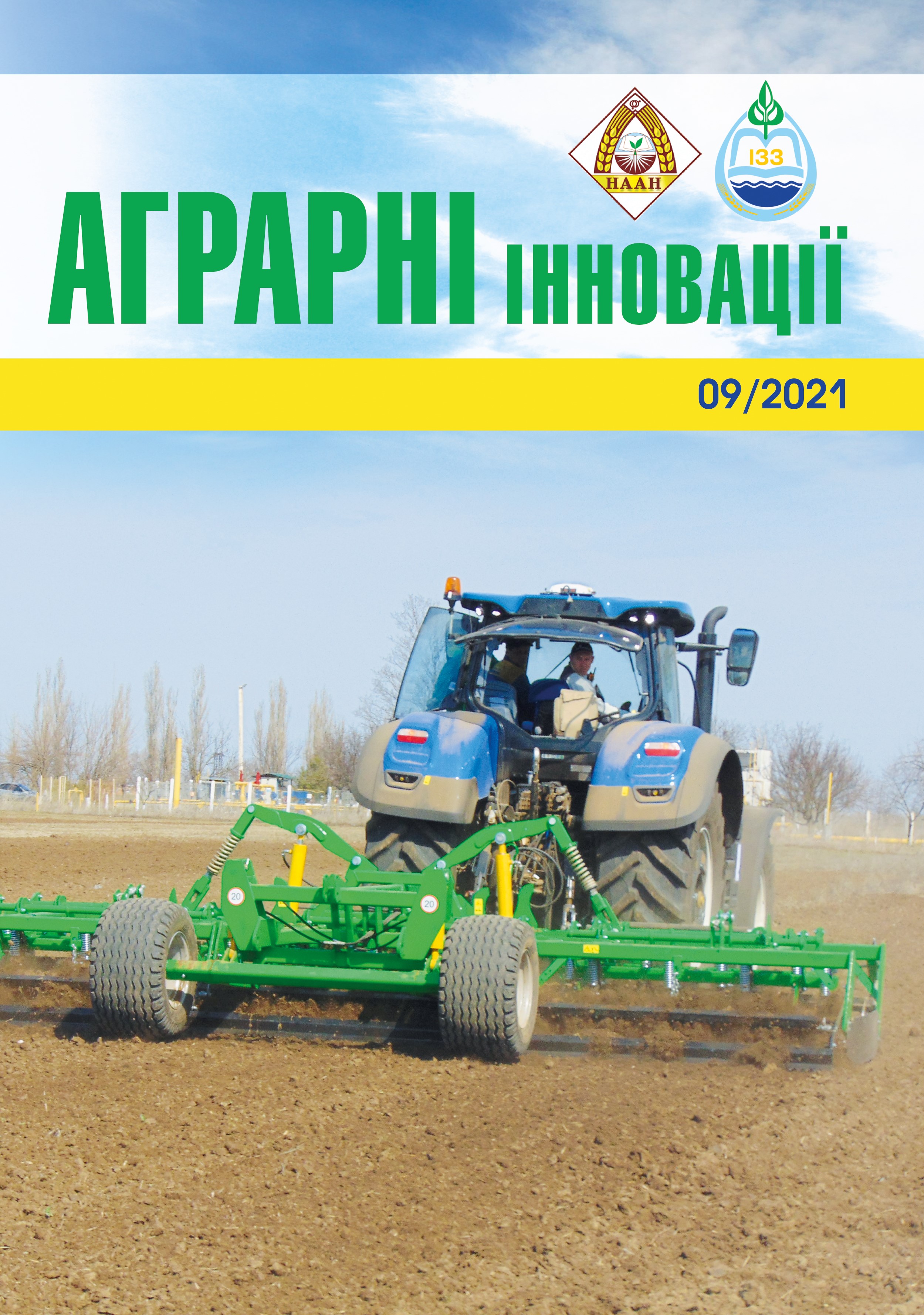Formation of a complex of biometric, structural and productive indicators of Sarepta mustard depending on the sowing rate and the level of biologization of the technology of growing crops in the Southern Steppe
Abstract
The aim of the study was to establish the impact on the complex of biometric (plant height, assimilation surface area, leaf index of agrophytocenosеs), structural (elements of the test sheaf, M1000) and productive traits (yield of conditioned seeds, crude fat and essential oil) depending on from the norm of sowing culture and the degree of biologization of culture technology. The realization of this goal was carried out by establishing a two-factor field experiment and conducting a set of observations and laboratory studies. Factor A (culture technology) was represented by variants of traditional zonal technology of mustard cultivation; biologized technology (rejection of mineral fertilizers and their replacement by organic preparations) and organic (replacement of mineral fertilizers and synthetic pesticides by organic preparations). Factor B was different sowing rates (from 2,0 to 3,0 million pieces of similar seeds per 1 ha with an interval of 0,5 million). The experiment sowed a variety of mustard Prima. The repetition of the experiment is four times, the total area of the experimental plot is 0,9 ha, the total area of the first order plot is 250 m2, the accounting area is 200 m2. The plots in the experiment were placed by the method of split plots with partial randomization. Increasing the sowing rate from 2,0 to 3,0 million units / ha causes a deterioration in the value of most biometric indicators (plant height, foliage) and all indicators of crop structure. However, due to the discrete nature of the actual number of plants preserved in the agrocenosis at the time of the study, the values of such indicators as assimilation apparatus area and leaf index, as well as yield of conditioned seed crops were curvilinear: with increasing seeding rate from 2,0 to 2,5 million units/ ha increased, and further decreased. The norm of 2,5 million units / ha is recognized as the most optimal sowing rate for all variants of cultivation technology. The experiment also noted a significant advantage of biologized and organic technology of growing Sarepta mustard over traditional intensive in terms of biometric and structural indicators, as well as the level of yield of conditioned seeds and its quality indicators, especially crude fat content.
References
2. Мельник А.В., Жердецька С.В. Стан та перспективи вирощування гірчиці у світі та на Україні. Вісник Сумського національного аграрного університету. Серія «Агрономія і біологія». 2015. Вип. 3 (29). С. 166–169.
3. Наукові основи виробництва органічної продукції в Україні : монографія / за ред. Я.М. Гадзало, В.Ф. Камінського. Київ : Аграрна наука, 2016. 592 с.
4. Поляков О.І. Особливості формування продуктивності гірчиці ярої під впливом стимуляторів росту за різних способів сівби. Науково-технічний бюлетень Інституту олійних культур Національної академії аграрних наук. 2017. Вип. 24. С. 181–187. URL: http://nbuv.gov.ua/UJRN/znpiok_2017_24_22.
5. Система удобрення сільськогосподарських культур у землеробстві початку ХХІ століття / за ред. С.А. Балюка, М.М. Мірошниченка. Київ : Альфа-стевія, 2016. 400 с.
6. Сівак А.Н., Костюкевич Т.К. Перспективи виробництва гірчиці в Україні. Рубіновські читання : матеріали ІІІ Всеукраїнської науково-практичної конференції, 14 травня 2021 р., м. Умань С. 18.






